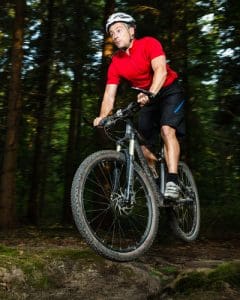 The sights and sounds of summer are here, and cyclists — whether competitive or recreational — are back on their bicycles and enjoying the outdoors.
The sights and sounds of summer are here, and cyclists — whether competitive or recreational — are back on their bicycles and enjoying the outdoors.
It is important to understand that bikes, like our shoes, require a good fit to get the most enjoyment out of them without discomfort or injury. A bike fit is a great way to start the season, especially if you have been suffering from an injury, purchased a new bike, had a previous crash on your bike or want to improve your performance.
There are angles, positions and heights that need to be considered when spending time in the saddle. Each bicycle and each rider is different. The most common bike-fit errors include saddle heights that are too high or low, handlebar reach that is either too long or short, and misalignments of the pedal and shoe.
Regardless of the reason for initially getting into cycling — commuting, racing or participating in a family ride — how you feel on the bike is what is important.
Proper bicycle fit can minimize discomfort and ensure safe bicycle operation. Common bicycling complaints include pain in the front of the knee, neck and upper back pain, lower back pain, hamstring tendonitis, hand numbness or pain, foot numbness or pain, and IT band tendonitis. Bicycle fit is an individual matter that reflects a person’s coordination, flexibility, strength and skeletal parameters.
It is great to blow the dust off the bike and get the proper bike fit, but we also need to do the same for our bodies. Certain muscles like your hamstrings, quadriceps, buttock (gluteal), and back muscles and joints require flexibility and strength to be an efficient rider. These muscles generate the majority of the pedaling force. When your bike is adjusted correctly, these muscles are able to produce the greatest amount of power. However, if you do not have the appropriate flexibility, a great adjustment can’t be made. If you find that you are stiff and sore after riding, it might mean that you have some limitations in your muscle and joint flexibility.
A common complaint of riders is neck soreness. In fact, bike riding is a “risk factor” for developing neck pain. The typical reason for this is that riders are not using their midback (thoracic spine) correctly. Riders often round this portion of their back, which means that their neck must overextend in order to adequately see the road.
Another common complaint is low back pain, which can also result from rounding the spine. This often happens when the saddle is too high, the bike is too big for the cyclist, or the saddle is too far forward. This can be addressed with postural awareness and exercises but occasionally requires some hands-on manual therapy to get the joints and muscles working properly. As your body changes, there might need to be adjustments made to your bike. This is true with any sport that requires equipment. The bike and the rider are a team, and changes in the “structure” of either bike or rider might require minor adjustments to each. However, ultimately it is about the bike fitting to you, not you to the bike. Doing this will insure that cycling is about enjoyment and not pain.
Source: www.coloradoan.com; June 14, 2014.








